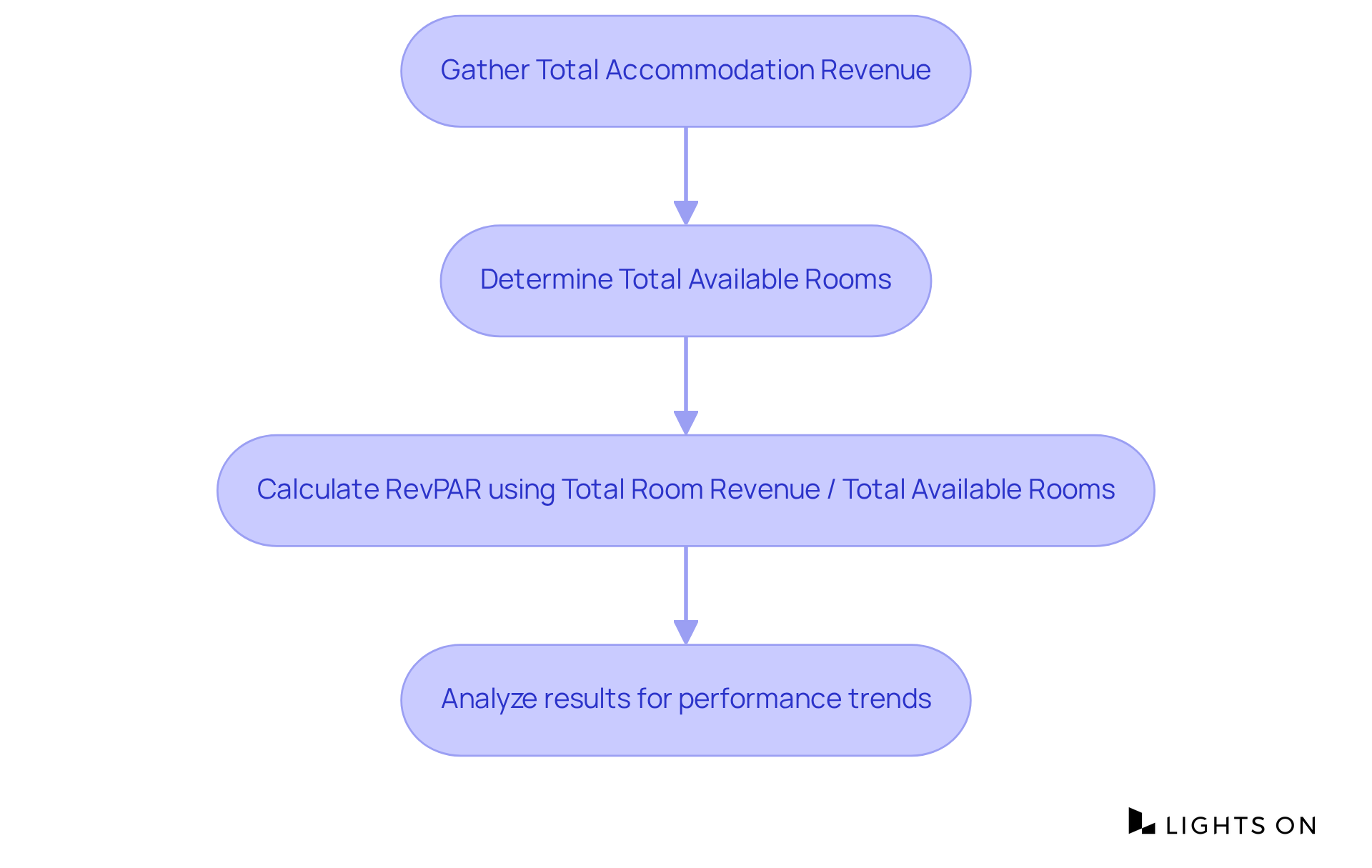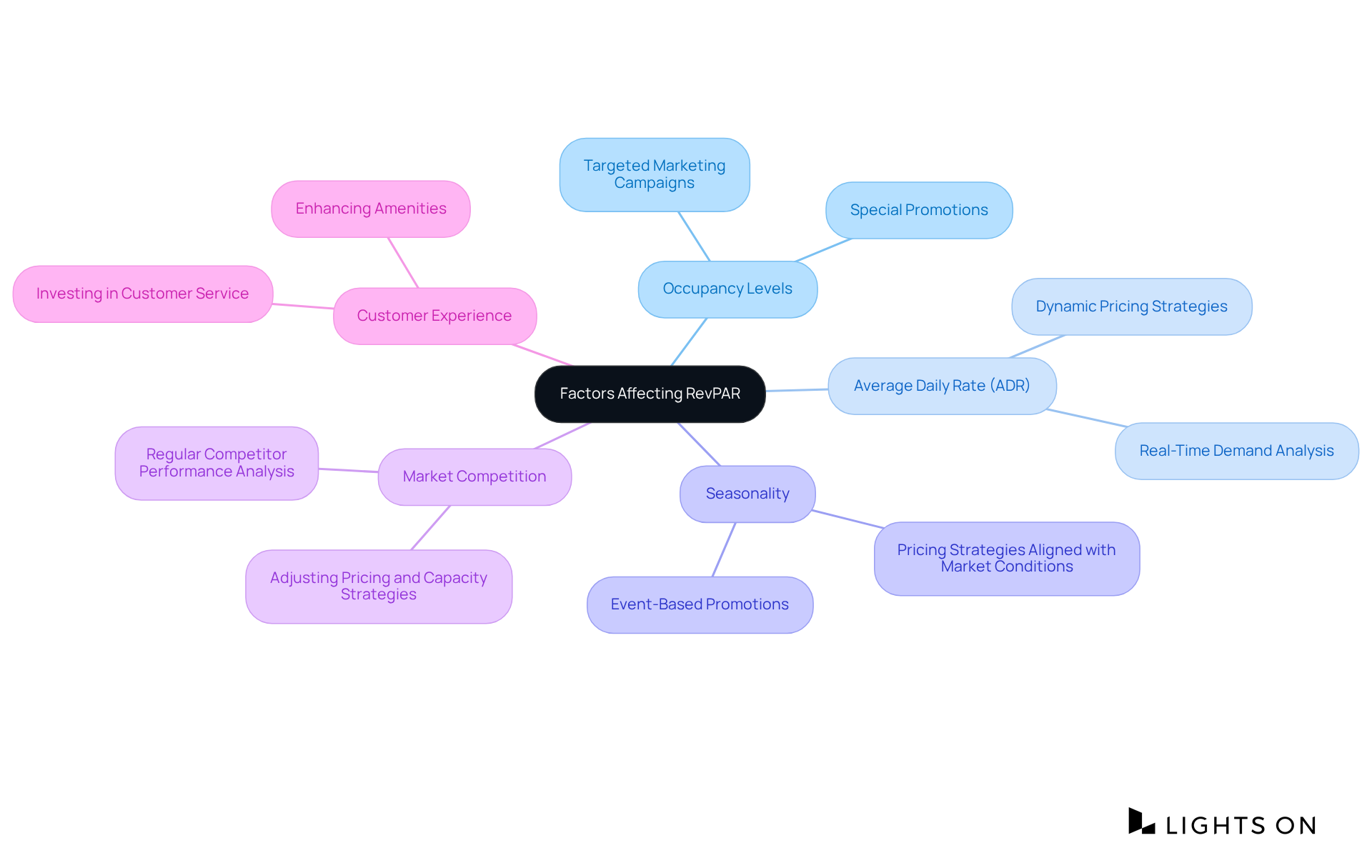The revenue per available room (RevPAR) formula is a critical metric for assessing a hotel's financial performance. It is calculated by dividing total room revenue by the number of available rooms during a specified timeframe. Understanding RevPAR is paramount for hospitality managers as it empowers them to make informed decisions that can significantly enhance profitability.
By analyzing key factors such as:
managers can strategically position their establishments for success. Ultimately, leveraging RevPAR insights can lead to more effective revenue management and improved operational outcomes.
Understanding the intricacies of the hospitality industry demands a firm grasp of key performance metrics, with Revenue Per Available Room (RevPAR) standing out as the most critical. This powerful formula not only quantifies a hotel's income-generating capabilities but also offers valuable insights into occupancy rates and pricing strategies that can significantly enhance profitability.
As the industry contends with economic fluctuations and evolving travel patterns, a pressing challenge emerges: how can hotel managers effectively leverage RevPAR to navigate these uncertainties and optimize their financial performance?
The serves as a critical metric in the hospitality sector, assessing an establishment's ability to generate income from its available accommodations. This measure is obtained by applying the , which divides total room revenue by the number of available rooms over a designated timeframe. By offering insights into both occupancy rates and average daily rates (ADR), RevPAR becomes an indispensable tool for evaluating a lodging establishment's performance. An increase in the revenue per available room formula indicates , essential for informed business decisions and revenue enhancement strategies.
In 2025, the is projected to experience a slight increase, with estimates ranging from 1.3% to 2%, and a specific forecast of 1.8% growth as reported by CoStar and Tourism Economics. However, it is crucial to note that the growth rate for the revenue per available room formula is expected to decelerate significantly to 0.8% due to various economic factors. This anticipated growth is driven by an expected rise in corporate travel and the influence of major events, which are likely to bolster demand. Experts emphasize that is vital for evaluating accommodation performance, particularly in a competitive landscape where operational efficiency can substantially impact profitability. As Michael Nhu, senior economist at CBRE, articulates, "This will improve pricing power for accommodation operators over the long term and advantage existing assets by raising replacement costs." In light of economic instabilities, including a projected inflation increase to 2.7% in 2025, will be paramount for hotel management strategies in 2025 and beyond.

To calculate RevPAR, begin by gathering . Collect the for the period you wish to analyze, encompassing all income generated from sales of lodgings. Next, determine the total number of available accommodations in your establishment for the same period. This includes all spaces that might have been sold, regardless of usage.
Now, utilize the , which states that:
For instance, if your hotel generated $100,000 in room revenue and had 10,000 available room nights, the calculation would be straightforward:
This indicates that your hotel earned $10 for each available room during that period. Furthermore, if a hotel has an 80% and an (ADR) of $110, the RevPAR calculation would be:
Consistently calculating the revenue per available room formula is essential for monitoring performance trends and making informed, data-driven decisions. Understanding the not only assists in evaluating room rates and capacity potential but also helps pinpoint revenue inefficiencies. It is crucial to note that revenue per available room does not account for costs or non-room income, which are vital for a comprehensive understanding of a lodging establishment's . Additionally, enhancing revenue per available room necessitates teamwork among all hotel divisions, as each department plays a role in optimizing guest stays and income.

Several factors can significantly affect the formula, and understanding these elements is crucial for maximizing overall revenue.
By regularly monitoring these factors, hotel managers can make informed decisions that enhance their RevPAR and overall financial performance.

Mastering the revenue per available room (RevPAR) formula is essential for achieving success in the hospitality industry. This key performance indicator not only reflects an establishment's income-generating capabilities but also serves as a guiding metric for informed decision-making. By understanding and leveraging RevPAR, hotel managers can enhance operational efficiency and improve overall profitability, ensuring their business remains competitive in a dynamic marketplace.
Throughout this article, various aspects of RevPAR have been explored, including its definition, calculation methods, and the factors influencing its performance. Key insights such as the impact of occupancy levels, average daily rates, seasonal demand, market competition, and customer experience have been highlighted as essential elements for maximizing RevPAR. Furthermore, the importance of continuous monitoring and strategic adjustments to optimize revenue outcomes has been emphasized.
In light of the insights shared, it is evident that a proactive approach to managing RevPAR can significantly influence a hotel's financial success. By implementing best practices and focusing on the factors that drive revenue, hospitality professionals can position their establishments for long-term growth and resilience. Embracing the RevPAR formula not only enhances profitability but also fosters a deeper understanding of the market dynamics that govern the hospitality landscape.
What is Revenue Per Available Room (RevPAR)?
Revenue Per Available Room (RevPAR) is a key metric in the hospitality sector that measures an establishment's ability to generate income from its available accommodations. It is calculated by dividing total room revenue by the number of available rooms over a specific period.
Why is RevPAR important for lodging establishments?
RevPAR provides insights into both occupancy rates and average daily rates (ADR), making it an essential tool for evaluating a lodging establishment's performance. An increase in RevPAR indicates improved financial stability and operational effectiveness, which are crucial for informed business decisions and revenue enhancement strategies.
What are the projected trends for RevPAR in 2025?
In 2025, the average RevPAR for U.S. accommodations is expected to experience a slight increase, with estimates ranging from 1.3% to 2%, specifically forecasting a 1.8% growth. However, this growth rate is expected to slow down to 0.8% due to various economic factors.
What factors are driving the anticipated growth in RevPAR?
The expected growth in RevPAR is driven by an anticipated rise in corporate travel and the influence of major events, which are likely to increase demand for accommodations.
How does economic instability affect RevPAR management?
Economic instabilities, including a projected inflation increase to 2.7% in 2025, make it crucial for hotel management to focus on RevPAR. Effective management of this metric will be vital for maintaining profitability in a competitive landscape.
What does the future hold for accommodation operators regarding pricing power?
Experts suggest that understanding and managing RevPAR will improve pricing power for accommodation operators over the long term, benefiting existing assets by raising replacement costs.
Transform your group booking strategies with Lights On and watch your occupancy soar.